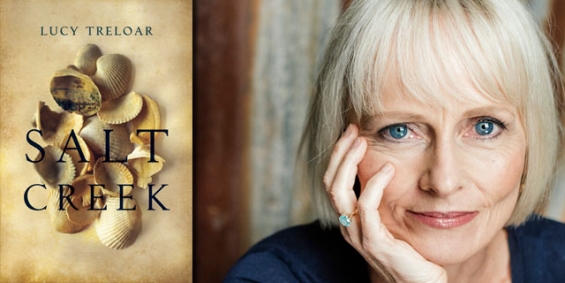Author spotlight: Lucy Treloar
17th June, 2016
We asked Lucy Treloar some questions about her novel Salt Creek and being shortlisted for the Prize.
What do you think about being shortlisted for the Walter Scott Prize for Historical Fiction? Do you see yourself as a historical novelist?
I am delighted and grateful at being shortlisted for this wonderful prize. Some of my happiest reading hours have been spent immersed in historical novels, many of them by authors long and shortlisted for the Walter Scott Prize. I never imagined I might one day be on this list myself, and it is strange and lovely to find myself there.
Historical novels open up so many possibilities for an author, and the writing of Salt Creek completely captivated me. The germ of an idea for another historical novel is waiting for the right conditions, but for now I’m working on a contemporary fiction.
How did the people and times you write about in this novel first lodge in your imagination?
The Coorong, where Salt Creek is set, has always had an almost mythical status in my family. Several times a year, when I was a child, we would make the 800km pilgrimage from Melbourne to the family beach house in South Australia, each time passing the Coorong’s inland margins. My mother would tell almost fantastical stories of one of our ancestors and his large family who moved to these wilds in an attempt to restore the family fortunes.
Those fragmentary tales were the foundation stones of Salt Creek. But the real catalyst for me was a research trip I went on to this region, kayaking up the lagoon and across to the windswept peninsula overlooking the Southern Ocean to the site of the old family homestead. After that the book demanded to be written. I was desperate to explore that world, and terrified that someone else would have the idea first.
What role does research have in your writing? When does the fiction take over from the facts?
Such an interesting question. In writing Salt Creek fact and fiction worked together throughout. I continued reading around the subject throughout the writing, often discovering information that suggested intriguing directions for the fiction, or that would add unexpected texture. I had a little bowl of flints and polished beach pebbles (both of which appear in the book) that I kept on my desk and I would feel them and listen to them moving against each other. They had a way of bringing the past closer, and were important to me in the writing. The time and place of Salt Creek became real to me. It was exciting when a new coincidence or connection came to light; I had the feeling that the past was trying to discover itself to me.

